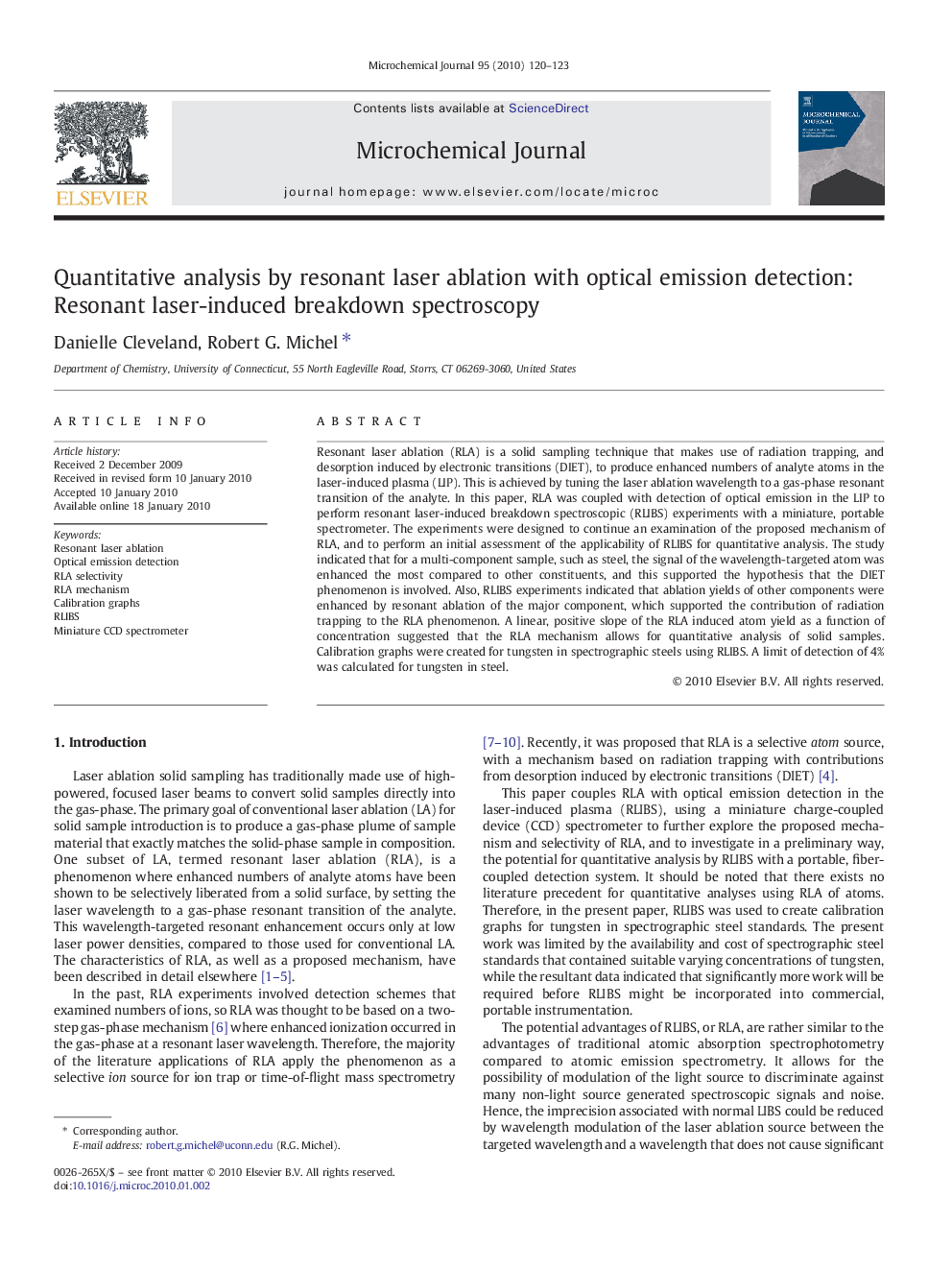| Article ID | Journal | Published Year | Pages | File Type |
|---|---|---|---|---|
| 1228114 | Microchemical Journal | 2010 | 4 Pages |
Resonant laser ablation (RLA) is a solid sampling technique that makes use of radiation trapping, and desorption induced by electronic transitions (DIET), to produce enhanced numbers of analyte atoms in the laser-induced plasma (LIP). This is achieved by tuning the laser ablation wavelength to a gas-phase resonant transition of the analyte. In this paper, RLA was coupled with detection of optical emission in the LIP to perform resonant laser-induced breakdown spectroscopic (RLIBS) experiments with a miniature, portable spectrometer. The experiments were designed to continue an examination of the proposed mechanism of RLA, and to perform an initial assessment of the applicability of RLIBS for quantitative analysis. The study indicated that for a multi-component sample, such as steel, the signal of the wavelength-targeted atom was enhanced the most compared to other constituents, and this supported the hypothesis that the DIET phenomenon is involved. Also, RLIBS experiments indicated that ablation yields of other components were enhanced by resonant ablation of the major component, which supported the contribution of radiation trapping to the RLA phenomenon. A linear, positive slope of the RLA induced atom yield as a function of concentration suggested that the RLA mechanism allows for quantitative analysis of solid samples. Calibration graphs were created for tungsten in spectrographic steels using RLIBS. A limit of detection of 4% was calculated for tungsten in steel.
